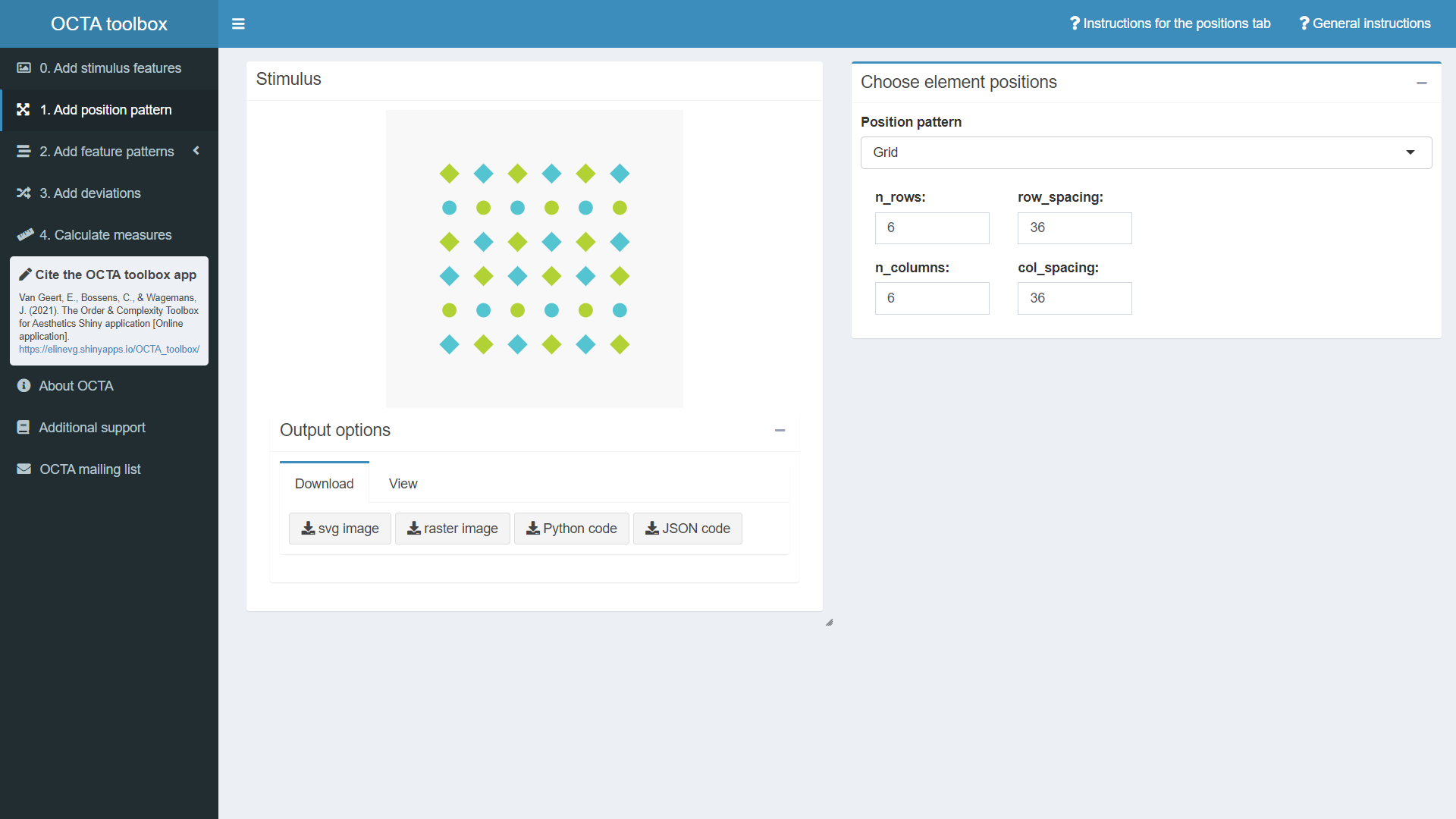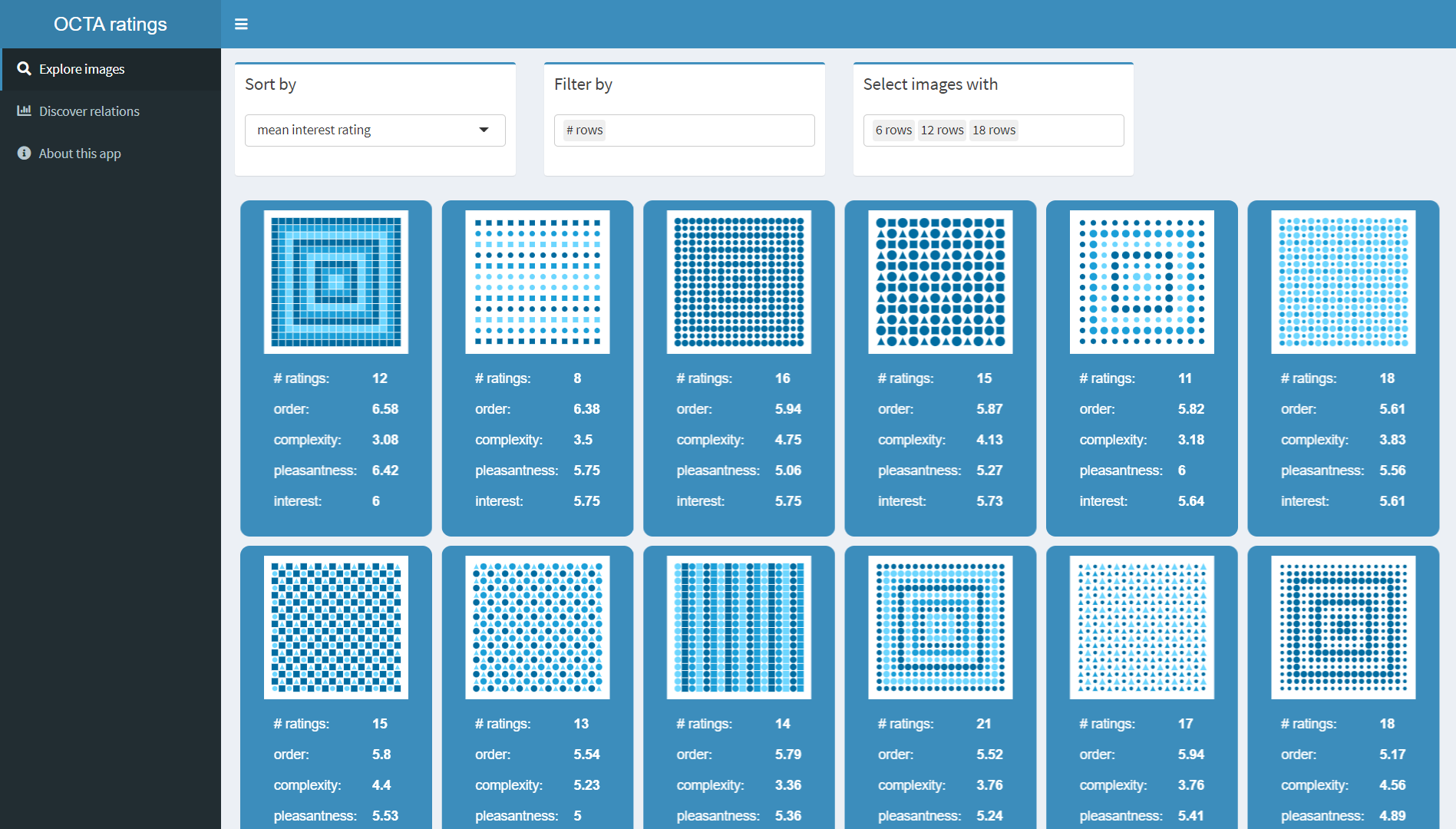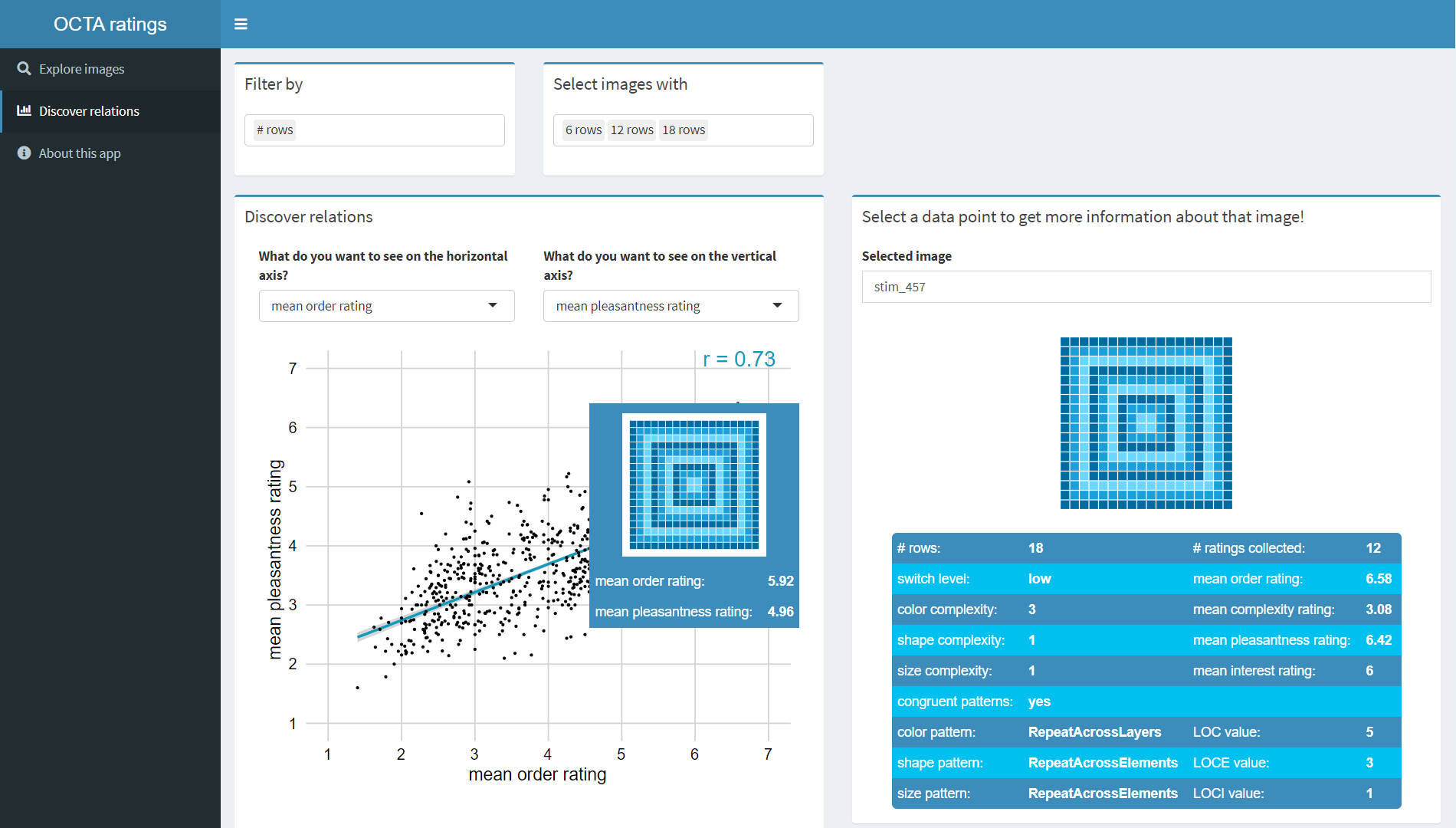The development of the OCTA toolbox:
An accessible, open-source tool to create
flexible and reproducible visual displays
Eline Van Geert, Christophe Bossens, & Johan WagemansLaboratory of Experimental Psychology, KU Leuven, Belgium
Aim of OCTA
Create reproducible and flexible multi-element displays varying qualitatively and quantitatively in:
ORDER  structure and organization
structure and organization
COMPLEXITY  quantity and variety
quantity and variety
available as a free tool for programmers (as a Python library) and non-programmers (as an online Shiny app)
1 Create stimulus & 2 Add positions
Specify stimulus type (Grid, Outline, Concentric) and stimulus features (e.g., orientation, background color)
Specify position pattern for elements
Test OCTA

but can also be used by broader public
to easily create interesting visual displays
3 Add feature patterns and pattern values & 4 Add deviations & 5 Save and recreate the stimulus
Features (including dynamic feature options!)
 shapes
shapes
 fillcolors
fillcolors
 boundingboxes
boundingboxes
 orientations
orientations
 borderwidths
borderwidths
 bordercolors
bordercolors
 opacities
opacities
 mirrorvalues
mirrorvalues
additional non-visual features: links, classlabels, idlabels
Pattern types
 Repeat
Repeat
 ElementRepeat
ElementRepeat
 Mirror
Mirror
 Gradient
Gradient
 Random
Random
 TiledGrid
TiledGrid
 TiledElementGrid
TiledElementGrid
Pattern directions
 AcrossElements
AcrossElements
 AcrossRows
AcrossRows
 AcrossColumns
AcrossColumns
 AcrossLeftDiagonal
AcrossLeftDiagonal
 AcrossRightDiagonal
AcrossRightDiagonal
 AcrossLayers
AcrossLayers
Position and element deviations
 position jitter
position jitter
 position deviations
position deviations
 swap elements
swap elements
 randomize elements
randomize elements
 remove elements
remove elements
Feature deviations
 swap features
swap features
 change features
change features
 randomize features
randomize features
 jitter features
jitter features
Output options
- stimulus as vector or raster image
- computer-readable output to recreate the stimulus in Python with the LoadFromJSON function
- in the online app: download or view the Python code
Interactive online applications
Make research data available for exploration by a broader audience in an easy and interactive way: OCTA ratings app


Why use OCTA?
- varying qualitatively or quantitatively in order and/or complexity
- reproducible, adjustable, and open source
- easy to create
- tailored for online use
- static or dynamic
- multimodal (adding sound is possible using Javascript)
- …

Contact
Eline Van Geert - eline.vangeert@kuleuven.be
supported by a Ph.D. fellowship of the Research Foundation - Flanders (FWO)
supported by a Ph.D. fellowship of the Research Foundation - Flanders (FWO)

DigiSoc Launch Event 2021 - October 26th - Leuven